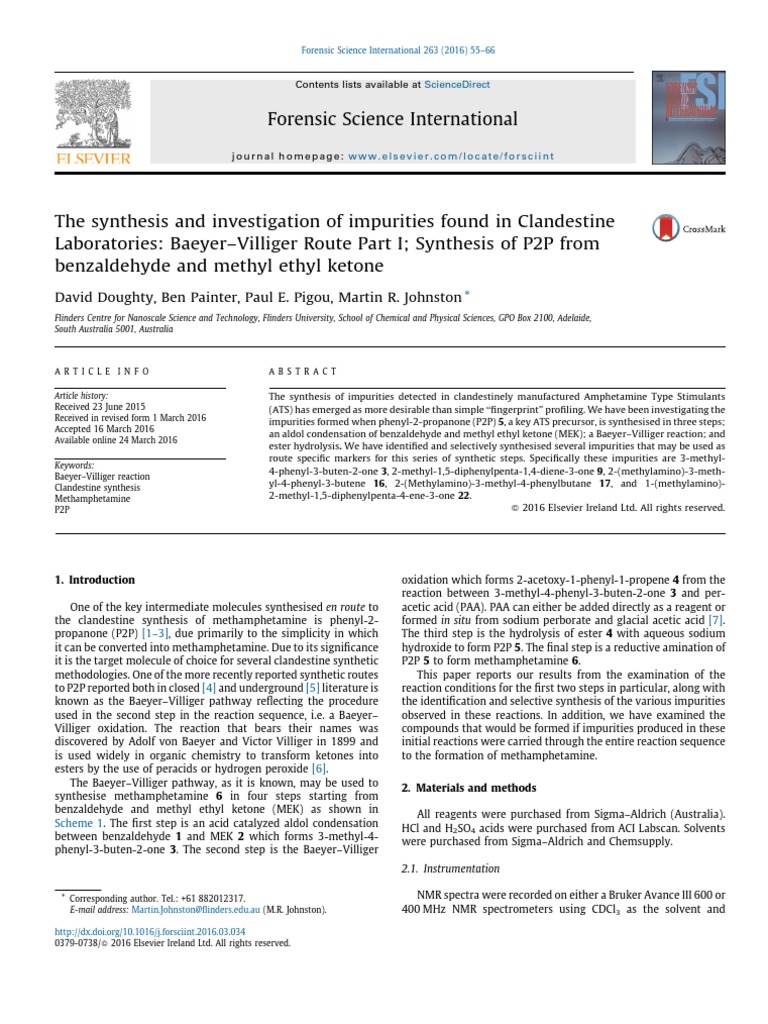Hi everyone !
I've tried this synthesis twice, and here's my conclusion on this one.
Firstly, I'm far from being a trained chemist, so what I say should be taken with a grain of salt. Feel free to correct what I say.
The reactions and mechanisms are the result of my research and my understanding of synthesis, and are therefore also open to criticism.
I just saw that a lot of people had already discussed the subject, so I hope my post won't be redundant. Also, the link at the end of my post has already been posted on the topic. Sorry if you don't learn anything from my post.
Step 1: crossed aldol condensation :
Normally we use a small excess of MEK in this reaction because ketones can self-condense, but this reaction is thermodynamically devafable, and will be done up to a maximum of 5% in the literature I've been able to find. Nevertheless, according to this paper, benzaldehyde can react with the final product, which would greatly lower the yield, hence the use of excess MEK to make sure that the benzaldehyde reacts with the right molecule. (Moreover, according to the same paper, distillation between crossed aldol condensation and Baeyer-Villiger oxidation is not useful, as the by-products will not react during the Baeyer-Villiger oxidation and can be eliminated with the next distillation). I wondered whether it wouldn't be better to add the benzaldehyde drop by drop, which would make sure there was an excess of MEK, and thus prevent the benzaldehyde from reacting with the newly formed product. And since the aldol self-condensation of ketones is not very favorable, proceeding in this way may be better for yield. But as I said, what I'm saying needs to be verified.
As a catalyst we can normally use either an acid or a base for aldol reactions. I assume, however, that here we're using an acid to avoid a Cannizzaro reaction, because benzaldehyde is non-enolizable. By using an acid catalyst, we go through the formation of an enol instead of the enolate.
As an acid catalyst, I tried a strong addition of concentrated H2SO4 the first time I did this reaction, and the second time I only added a few drops. The difference I noticed between the two was that if too much H2SO4 was added, the product polymerized, making distillation almost impossible due to bumping.
Crossed aldol condensation will lead to 3-methyl-4-phenyl-3-buten-2-one.
For Baeyer-Villiger oxidation, I wanted to try perborate or sodium percarbonate. The only problem I saw with using sodium percarbonate was that it would react with the GAA and gradually neutralize it. And indeed this is a pretty bad idea, having tried it on a small scale. Percarbonate has trouble solubilizing, and needs a medium containing a little more water. Once that's done, you have to be careful not to release too much CO2. Peracetic acid is formed in situ and reacted with 3-methyl-4-phenyl-3-buten-2-one. To make my percarbonate solubilize, I added a little H2O2. But I'd say, if you don't have 50% H2O2, don't waste your time on this synthesis. And that's my conclusion. Although this synthesis may seem attractive, it's tedious and labor-intensive, especially with all those vacuum distillations (I've tried without, it works, but leads to working with high temperatures, and I've even managed to destroy product that way!). So I'd advise anyone to turn to another synthesis method. I managed to get what I think was the desired product in the end, but in my opinion not enough to justify the whole procedure. For those who want to know more, I recommend reading the paper, searching for "Two dogs aldol", learning about the mechanisms of aldol reaction, baeyer-villiger oxidation and hydrolysis of esters.
Scribd is the world's largest social reading and publishing site.

www.scribd.com


